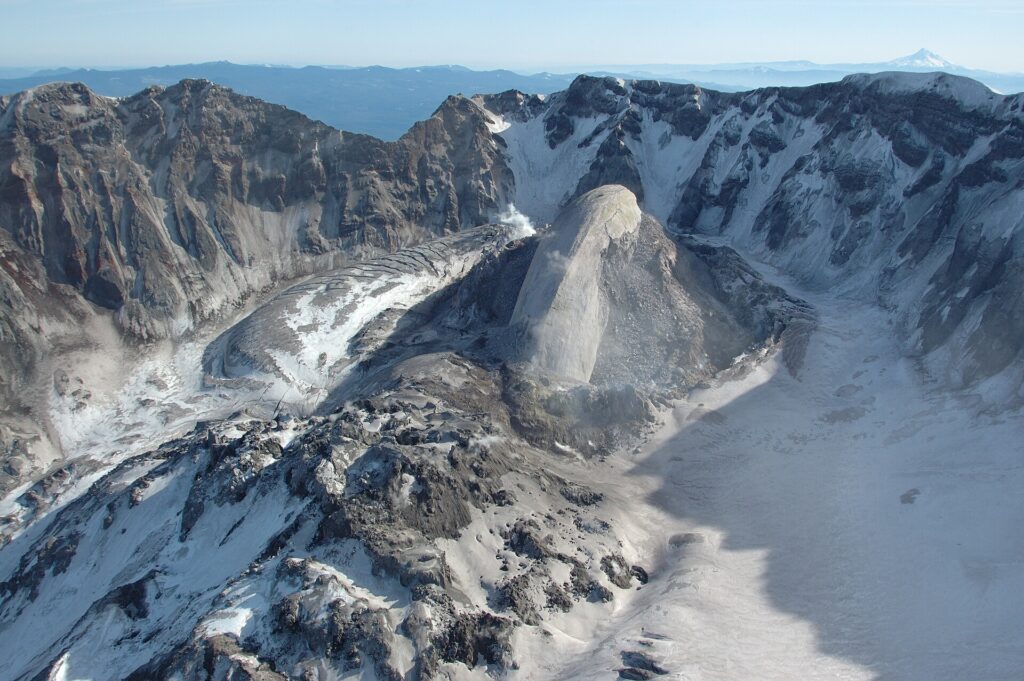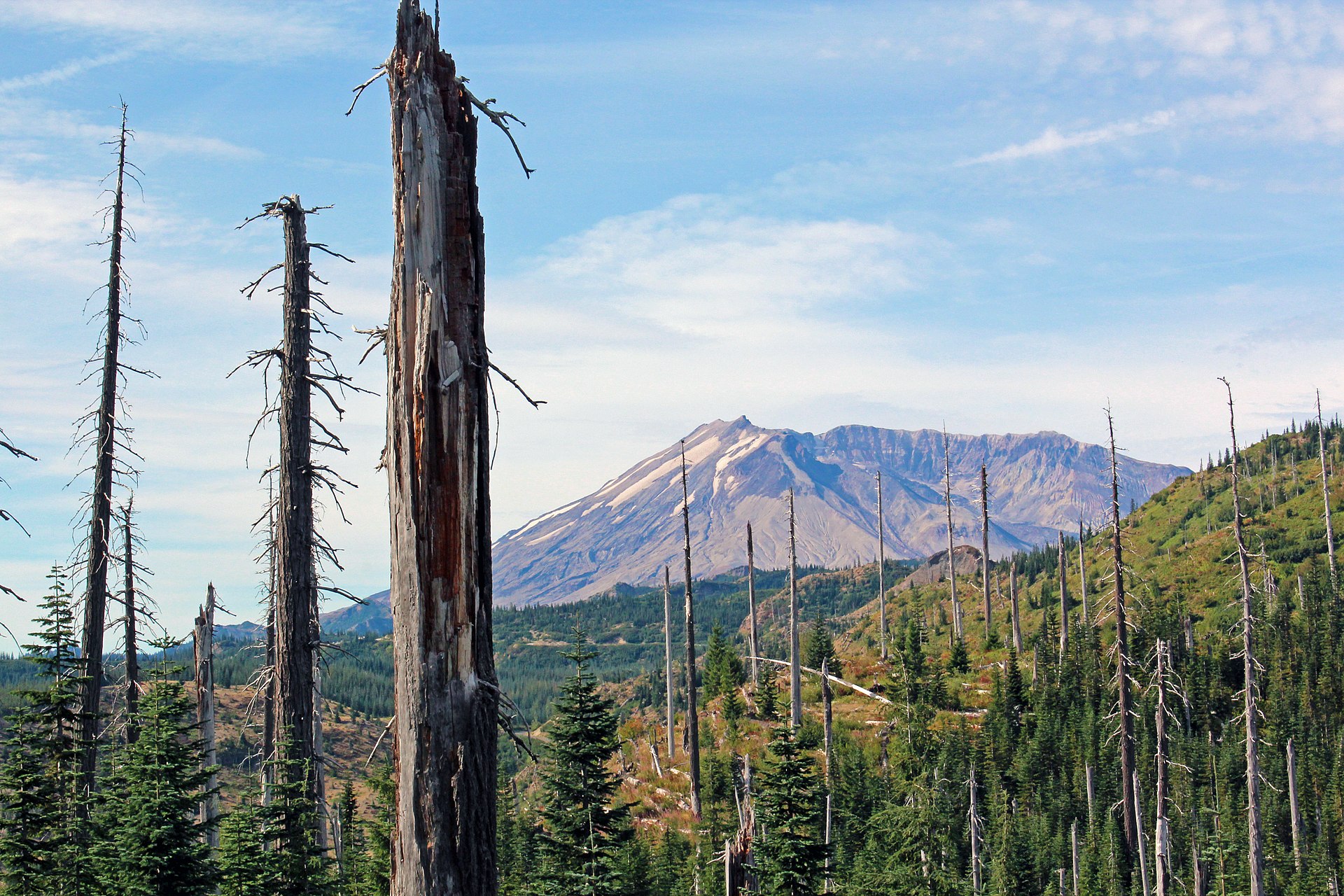Embark on an exhilarating journey as we explore the magnificence of Mount Saint Helens, standing tall in the Cascade Range of the USA. Through the lens of landscape photography, we will unravel the captivating story of this iconic volcanic mountain. Immerse yourself in its history, witness its awe-inspiring beauty, and learn tricks to capture its breathtaking landscapes. Join us as we delve into the resurgence of Mount Saint Helens, a tale waiting to be told through stunning visual imagery.
Table of Contents
- The Resurgence of Mount Saint Helens
- The Best Equipment for Capturing the Resurgence of Mount Saint Helens
- The Best Time and Vantage Points
- Frequently Asked Questions
- 1. What is the history of Mount Saint Helens?
- 2. How can I capture the breathtaking beauty of Mount Saint Helens through landscape photography?
- 3. Are there any photography tours or workshops available for Mount Saint Helens?
- 4. Is it safe to visit Mount Saint Helens?
- 5. What are some other notable volcanic mountains in the Cascade Range, USA?
- 6. Are there any famous photographs or photographers who have captured Mount Saint Helens?
- Wrap Up
The Resurgence of Mount Saint Helens
Mount Saint Helens, located in the Cascade Range of the USA, is a stunning destination for landscape photography. Known for its dramatic volcanic mountains and breathtaking scenery, capturing the beauty of Mount Saint Helens is a photographer’s dream come true.
1. Capturing the Majesty of Mount Saint Helens
With its towering presence and unique geological features, Mount Saint Helens offers countless opportunities for stunning photographs. One of the best ways to showcase its majesty is by capturing the mountain against a vibrant sky during sunrise or sunset. The warm, soft light at these times of day enhances the rich colors and textures of the landscape, creating a truly mesmerizing image.
Another approach is to include some foreground elements in your composition. You can incorporate nearby trees, wildflowers, or even a flowing river to provide depth and visual interest to the photograph. Remember to use a wide-angle lens to capture the vastness of the scene and create a sense of scale.
To add a sense of drama and emphasize the volcanic nature of Mount Saint Helens, try experimenting with long exposure photography. By using a slow shutter speed, you can capture the movement of clouds or water around the mountain, creating a dynamic and captivating image.
2. Exploring the History of Mount Saint Helens
Before venturing out to photograph Mount Saint Helens, it’s essential to understand its history and the impact of its volcanic eruption in 1980. This catastrophic event dramatically reshaped the mountain and the surrounding landscape, creating a unique and ever-evolving environment for photographers to explore.
One of the most remarkable aspects of Mount Saint Helens’ resurgence is the regrowth of its ecosystem. The barren landscapes from the eruption are now filled with vibrant wildflowers, mosses, and other plants, providing a stark contrast against the mountain’s rugged terrain. Capturing the juxtaposition of life and destruction can yield powerful and thought-provoking images.
Additionally, the volcanic activity has left behind incredible geological formations, including deep canyons, lava tubes, and picturesque lakes. These geological wonders offer endless opportunities for creative compositions, enabling photographers to showcase the unique character of Mount Saint Helens.
It’s important to note that Mount Saint Helens is a protected area, and certain zones may have restricted access for preservation purposes. Before starting your photographic journey, ensure you are aware of any regulations and practice responsible photography by leaving no trace.
In conclusion, Mount Saint Helens is a captivating subject for landscape photography. Its majestic presence, fascinating history, and unique geographical features make it an ideal destination for photographers seeking breathtaking images. Visit this stunning volcanic mountain and immerse yourself in its wonders – you won’t be disappointed.
Mount Saint Helens is an active stratovolcano located in the Cascade Range of the western United States. It is famous for its 1980 eruption, one of the most catastrophic volcanic events in U.S. history, which caused widespread destruction and dramatically reshaped the surrounding landscape.
The Best Equipment for Capturing the Resurgence of Mount Saint Helens
As a photographer embarking on a journey to capture the breathtaking beauty of Mount Saint Helens, it is essential to equip yourself with the right camera, lenses, and other accessories. By choosing the right equipment, you can truly capture the essence of this majestic volcanic mountain in the Cascade Range, USA.
Camera Options
When it comes to choosing a camera for landscape photography, there are a few options to consider:
- DSLR: A DSLR camera offers versatility and excellent image quality. The high-resolution sensors and interchangeable lenses make it a popular choice among photographers who want to capture the intricate details of Mount Saint Helens.
- Mirrorless Camera: Mirrorless cameras have gained popularity in recent years due to their compact size, advanced technology, and image quality. They are a great option for photographers who value portability without compromising on performance.
- Medium Format: For professional photographers seeking the utmost image quality and resolution, medium-format cameras provide exceptional detail and color reproduction. However, they tend to be bulkier and more expensive.
Ultimately, the choice of camera depends on your personal preference, budget, and desired level of image quality.
Lenses and Accessories
To truly capture the stunning landscape of Mount Saint Helens, having the right lenses is crucial. Here are some options to consider:
- Wide-angle Lens: A wide-angle lens, such as a 16-35mm or 14-24mm, allows you to capture the vastness of Mount Saint Helens and its surrounding scenery. It is ideal for capturing sweeping panoramic views and grand landscapes.
- Telephoto Lens: A telephoto lens, such as a 70-200mm or 100-400mm, enables you to capture the finer details of Mount Saint Helens, even from a distance. It’s perfect for isolating specific features or capturing wildlife that may inhabit the area.
- Neutral Density (ND) Filter: Mount Saint Helens offers a range of lighting conditions throughout the day, and using ND filters can help you control the exposure and create long-exposure effects. A 3-stop or 6-stop ND filter is a good starting point.
- Sturdy Tripod: A sturdy tripod is essential for landscape photography, especially when shooting in low light or long-exposure situations. Look for a tripod that is lightweight, yet stable enough to withstand windy conditions.
Remember, the right equipment is just one aspect of capturing stunning photographs of Mount Saint Helens. Understanding composition, lighting, and the mountain’s unique features will further enhance your photography skills and allow you to create breathtaking images.

The Best Time and Vantage Points
If you are a landscape photography enthusiast, Mount Saint Helens in the Cascade Range of the USA should be on your bucket list. This magnificent volcanic mountain offers a wealth of photographic opportunities, from its awe-inspiring landscape to its fascinating history. In this section, we will explore the best time of year to capture the beauty of Mount Saint Helens and provide you with information on the ideal vantage points to enhance your photography.
Best Time of Year for Photography
While Mount Saint Helens is captivating at any time of the year, certain seasons offer unique characteristics that can make your photographs truly exceptional.
Spring (April to June) is a fantastic time to visit Mount Saint Helens, as the landscape begins to awaken from its winter slumber. The surrounding valleys come alive with vibrant wildflowers, creating a colorful mosaic against the mountain’s majestic backdrop. The fresh greenery and the contrast with the lingering snow on the peaks make for stunning compositions.
Summer (July to September) brings long daylight hours and clear skies, allowing you to capture the mountain in all its glory. The warm weather also offers the opportunity to explore the diverse trails around the volcano and discover hidden gems for your photography. Be sure to pack sunscreen and plenty of water for your summer shoot!
Fall (October to November) treats you to a symphony of autumn colors as the foliage surrounding Mount Saint Helens turns vibrant hues of red, orange, and gold. The contrast between the fiery foliage and the ash-covered slopes of the volcano creates a breathtaking spectacle and endless creative possibilities for your photographs.
Winter (December to March) transforms Mount Saint Helens into a winter wonderland. Snow blankets the entire landscape, creating a serene and ethereal atmosphere. The stark white against the steely grey of the volcano can result in striking monochrome images. However, keep in mind that winter conditions can be challenging, so be prepared and exercise caution during your photography adventures.
Choosing the Perfect Vantage Point
Mount Saint Helens offers numerous vantage points to capture its enchanting beauty, each offering a unique perspective. Here are a few options to consider:
- Windy Ridge: Located on the north side of the mountain, Windy Ridge provides a mesmerizing view of the volcano’s crater and the surrounding devastated landscape. The viewpoint overlooks Spirit Lake, offering the opportunity to capture stunning reflections of Mount Saint Helens on calm days.
- Ape Cave: This lava tube cave on the south side of the mountain presents a different photographic experience. Venture underground and capture the eerie atmosphere created by the volcanic rock formations and the play of light inside the cave.
- Lava Canyon: For those seeking a more adventurous and dramatic scene, Lava Canyon is the spot to be. The trail takes you through a rugged canyon with breathtaking waterfalls and lava formations. Use long exposure techniques to capture the silky smooth flow of water, adding a dynamic element to your photographs.
- Loowit Viewpoint: Situated on the east side of Mount Saint Helens, Loowit Viewpoint offers a panoramic view of the volcano. This vantage point allows you to capture the mountain in its entirety, showcasing its grandeur against the backdrop of the surrounding landscape.
Remember to research and plan your visit in advance to make the most of your photography expedition. Keep an eye on weather conditions and road closures to ensure a safe and successful trip. Whether you visit during spring, summer, fall, or winter and choose Windy Ridge, Ape Cave, Lava Canyon, or Loowit Viewpoint, photographing Mount Saint Helens is an experience you won’t soon forget.
One helpful photography tip for capturing the beauty of Mount Saint Helens is to use a wide-angle lens. This will allow you to include more of the landscape in your shot, emphasizing the enormity and grandeur of the volcanic mountains. Experiment with different compositions to create stunning images that truly showcase the awe-inspiring beauty of this natural wonder.
Frequently Asked Questions
1. What is the history of Mount Saint Helens?
Mount Saint Helens is a stratovolcano located in the Cascade Range, USA. It gained worldwide attention due to its cataclysmic eruption in 1980, which caused widespread devastation. The volcano had been dormant since the mid-1800s, making the eruption unexpected and devastating.
2. How can I capture the breathtaking beauty of Mount Saint Helens through landscape photography?
To capture the beauty of Mount Saint Helens, it is essential to consider the following tips:
- Choose the right time of day for optimal lighting conditions, such as sunrise or sunset.
- Include elements in the foreground to create depth and perspective.
- Experiment with different angles and compositions to find the most compelling shot.
- Use a wide-angle lens to capture the vastness of the landscape.
- Consider using filters to enhance colors and contrast.
3. Are there any photography tours or workshops available for Mount Saint Helens?
Yes, there are photography tours and workshops specifically tailored for capturing the beauty of Mount Saint Helens. These tours provide valuable insights, guidance, and opportunities to photographers of all skill levels to improve their craft and capture stunning images of the volcano and its surroundings. Many professional photographers and local guides offer such tours, so be sure to research and choose one that suits your needs.
4. Is it safe to visit Mount Saint Helens?
Yes, it is generally safe to visit Mount Saint Helens. However, it is essential to be aware of any volcanic activity or alerts issued by the authorities before planning your trip. Additionally, it is advisable to follow safety guidelines and stay within designated areas. Always prioritize your safety and well-being when visiting any natural environment.
5. What are some other notable volcanic mountains in the Cascade Range, USA?
The Cascade Range in the USA is home to several other notable volcanic mountains. Some of the prominent ones include Mount Rainier, Mount Baker, Mount Hood, and Mount Adams. Each of these mountains offers unique perspectives for landscape photography and attracts adventurers and nature enthusiasts alike.
6. Are there any famous photographs or photographers who have captured Mount Saint Helens?
Yes, there are several famous photographs of Mount Saint Helens captured by renowned landscape photographers over the years. Some notable photographers who have captured its beauty include Ansel Adams, Galen Rowell, and Art Wolfe. Their captivating images have helped showcase the magnificence of Mount Saint Helens to the world.
Wrap Up
As we conclude our photographic journey through the resurgent beauty of Mount Saint Helens, it’s evident that this iconic volcanic mountain in the Cascade Range, USA, holds a captivating allure. Its rugged landscapes and dramatic history continue to amaze and inspire photographers and nature enthusiasts alike.
Whether you’re a landscape photography enthusiast seeking to capture the breathtaking scenery of Mount Saint Helens or simply an admirer of these majestic volcanic mountains, this blog has hopefully provided valuable insights and tips.
We encourage you to share your thoughts and experiences in the comments below. Have you visited Mount Saint Helens? What challenges have you faced while capturing its beauty? Let’s engage in a dialogue and continue to appreciate the allure of this geological wonder.


